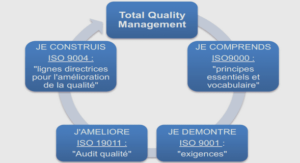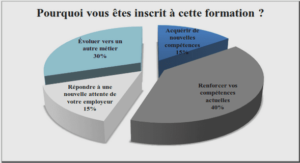Using YouTube videos as a support for teaching vocabulary Technological
Using YouTube videos as a support for teaching vocabulary
Technological tools have been progressed and developed. This development spreads over time and reaches the field of foreign language teaching and learning. Besides, it has covered different language aspects such as the four skills and the language elements, especially vocabulary. In the past, teaching depended widely on verbal instruction and communication; and was limited to the use of traditional teaching aids such as printed materials. In contrast, technological development influences almost our lives these days, as well as, increases our cognition of education. The verbal communication in classrooms still plays an integral role in teaching; however, both learners and teachers today intend to use pictures, videos, televisions, computers and up-to-date technological devices to decrease the amount of constraints of educational verbalism. As far as vocabulary teaching is concerned, BASURTO (2004) states that “traditional vocabulary instruction for many teachers involves having students look words up in the dictionary, write definitions, and use words in sentences. Word lists, teacher explanation, discussion, memorization, vocabulary books, and quizzes often are used in an effort to help students learn new words.” However, the present research work will provide an innovative technique of teaching vocabulary namely using YouTube videos as a support for teaching vocabulary.
A brief overview of the YouTube videos
TAYLOR (2009) states that “the rapid development of technology has created more opportunities for the use of video to facilitate teaching and learning as video sources are now plentiful and readily available.” The invention of Internet, for example, has provided numerous online video resources that could be exploited by ESL instructors. With the Internet becoming more significant and accessible in today‟s generation, the number of Internet sites that offer online video sharing services is also increasing. Video sharing is the service provided by websites or software through which users can distribute and share their video clips with others. The most popular one, especially among the young, is YouTube. GODWIN-JONES (2007) indicates that “YouTube is well known for its huge database and its popularity is indeed reflective through the number of upload and viewing recorded in which in the year 2007 alone, 16 an average of 65, 000 uploads and 100 million videos were viewed per day on YouTube.” With its massive online video database and popularity, YouTube seems to have high potential, particularly, as a resource to facilitate ESL teaching and learning. GODWIN-JONES (2007) indicates that “this is proven through its rising popularity among ESL instructors who are turning to YouTube as a resource especially in incorporating video for the purpose of ESL teaching and learning.”
The potential of YouTube videos for teaching
There are several reasons behind YouTube‟s potential as a resource to facilitate ESL teaching and learning. Besides its immense popularity as a video sharing website, it is also known for its huge database, and social-networking characteristic. These are also among the advantages of YouTube that can be exploited by ESL instructors for educational purposes.
Huge video database
According to YUDHI HERWIBOWO (2010), every day, about 65000 new videos are being uploaded on YouTube with around 100 million video clips being watched by its users from across the globe. This phenomenon demonstrates YouTube‟s potential as a resource to facilitate ESL teaching and learning. Moreover, ESL instructors are able to explore various types of videos through YouTube‟s video categories such as autos and vehicles, comedy, education, entertainment, film and animation, music, news, politics and others. With this variety of videos, ESL instructors would have the opportunity to use video for different language learning purposes in various creative ways. Not only that, since YouTube consists of videos which are uploaded by users from across the globe, this would also be helpful in demonstrating variety of English from all over the world to ESL learners in an authentic way.
Video length
Apart from the huge database, CHENG, DALE and LIU (2007) state that the length of YouTube videos is another advantage that separates YouTube from other traditional media content servers because YouTube is mostly consisted of short videos. This is mainly due to YouTube‟s policy of limiting its regular users to upload video of not more than 15 minutes of duration. Hence, video length is one of the essential aspects that need to be considered by ESL 17 instructors in incorporating it in any lesson. This would allow ESL instructors to choose videos of not only various types but also different length.
Social networking characteristic
According to CHENG, DALE, and LIU (2007), “the users’ ability to comment on the videos is one of the uniqueness of YouTube compared to other traditional media servers.” Therefore, ESL instructors could exploit this feature to be integrated as part of the strategies in using YouTube as a resource to facilitate ESL teaching and learning. This is especially because the social networking characteristic has been identified as one of the major contributors towards YouTube‟s popularity. The comment section, for example, could be used as a medium to promote peer-to-peer interaction among the learners, especially in encouraging them to use English among their peers, through this activity.
Criteria of selecting videos
According to TAYLOR (2009), there are many factors that need to be considered in assessing the usefulness of video material such the video length, sound, picture quality, language density, appropriateness and relevance of the video. In terms of video length, it is essential for ESL instructors to ensure that the video is neither too long nor too short. HARMER (2001) asserts that “the use of video between 1 and 4 minutes is suitable enough as it “can yield a number of exercise, demonstrate satisfying range of language, easier to manipulate, and can be highly motivating.” Moreover, He also indicates that the visual and sound quality of the video is also important as video with poor quality may distract learners‟ engagement and interest. According to XIAONING (2007), “it is also important for ESL instructor to ensure that the video usage is able to meet the teaching objectives of the lesson by considering its relevance and appropriateness.”
Psychological impacts of the use of videos on students‟ learning
The use of audio visual aids shows its large influence on the psychological features of learners. Concerning this point, we will focus more on the correlation between using 18 audio-visual aids and the two main psychological aspects such as “learning styles” and “affective variables”. These two factors are very important in learning any foreign language.
Learning style
According to DUNN (1984), learning style is “the way in which each person absorbs and retains information and/or skills.” Simply, they refer to the different ways that an individual prefer to learn through. According to Fleming‟s VARK model, there are three types of learning styles: visual, auditory, and tactile/ kinesthetic style. First, visual learners are those who prefer to learn through seeing. Second, auditory learners are those who prefer to learn through hearing. Third, kinesthetic learners are those who prefer to learn through touching, moving, and experiencing things. The table below summarizes the three styles and their characteristics: Visual learner Auditory learner Kinesthetic learner Reader/Observer Scans everything, wants to see things Enjoys maps, pictures, diagrams, and colors. Needs to see the teacher‟s body movement and facial expressions A good listener Interprets the speech through listening to tone of voice, pitch, speed… Prefers directions given orally Needs to listen to the teacher‟s talk and speech Uses repetition as a best learning strategy Learns best through songs, and other acoustic techniques “Doer” Needs to touch and handle materials and objects May find it hard to stay fixed for long periods Prefers to practice activities with the teacher by doing and moving throughout the class Table 1: Types of learning styles Multisensory methods have been stressed to address information to all learners. Unlike the traditional teaching methods, BLACKWOOD (2008) argued that new teaching methods should manipulate the majority of senses in classroom. He said that “instead of engaging only the ears of your congregation, multisensory communication enables you to 19 engage their ears, eyes, and hands, and it brings more of the whole person into the learning process.” Moreover, he emphasizes the role of senses in transmitting information to the brain. The input received is absorbed through senses; then, the latter transmit it to the brain. If the senses work correctly and received data in good manner, the brain will process it appropriately. The following pictures illustrate his idea: Figure 4: How information is received through senses Concerning the role of senses in learning, previous studies also emphasize the relation between senses and learning. The findings reveal that: 1/ 01 % of what is learned are from the sense of taste. 2/ 1.5% of what is learned are from the sense of touch. 3/ 3.5% of what is learned are from the sense of smell. 4/ 11 % of what is learned are from the sense of hearing. 5/ 83 % of what is learned are from the sense of sight. From the findings, we can notice that highly percentage of data is received through the sense of seeing (83%) which makes of more than the half. At the second place, hearing takes 11%. In other words, 94% of what is learned are from the senses of hearing and seeing, and this is a considerable percentage which instructors should pay attention to its relevance in classroom. This implies that technical devices such as videos have a greater impact and a dynamic informative system. Therefore, the most important questions to be asked here are: what is the most appropriate strategy that a teacher can use in classroom to meet these senses especially hearing and seeing? What are the useful teaching aids especially for teaching vocabulary that can best fit all learners‟ learning styles? So, to answer these questions, a review of audio-visual aids should be necessarily taken into consideration. Many researchers, like DUNN (1984) in “Learning Style Inventory” have 20 highlighted the role of audio-visual aids in meeting major learning styles. They have suggested a set of plans called “Contract Activity Packages” through which they have emphasized the use of multisensory resources (auditory, visual, and tactile). No one can neglect the fact that the integration of these means can meet the major senses and learning styles of pupils. For example, using video in teaching vocabulary items can be significant and clearly understood by both visual and auditory learners. To sum up, audio-visual aids are among the applicable ways that teachers should rely on in the process of teaching a foreign language; and which can fit all learners learning styles at once. The variety of using such aids should be also considered by teachers, that is to say, teachers should not focus more on only visual or only audio materials, but rather, they should try to use them interchangeably and within appropriate time.
Affective variables
According to the affective filter hypothesis which has been proposed by KRASHEN (1985), there are a number of affective variables that lead to success and failure in second or foreign language acquisition. These variables are classified under three main factors: motivation, self-confidence, and anxiety. KRASHEN (1985) indicates that “the comprehensible input that an acquirer receives may not last for a good production as native’s and that is because of these variables.” In the classroom context, this hypothesis focuses on the role of teacher not only in providing comprehensible input, but also in creating a comfortable and motivated classroom atmosphere. Psychologically, using audio-visual aids is considered among the helpful techniques which can lower anxiety, feel of boredom, fear; and increase learner‟s motivation and self-confidence. Learners who are not involved in classroom activities and who look distracted, it does not necessarily mean that they have not recognized the answers to teacher‟s questions, but rather, it can be derived from their shyness and poor self-confidence. So, implementing such teaching aids may help them participate confidently with the teacher and classmates. To conclude, integrating audio-visual aids in classroom has various beneficial implications concerning the psychological factors. Meeting pupils‟ learning styles, increasing their motivation and self-confident, and decreasing the tension of fear and anxiety are among these psychological phases. Other different benefits will be discussed after in this section.
The cognitive impact of using videos on learning vocabulary
the importance of dual coding theory As it is obvious in the domain of vocabulary learning, the challenge is not just in learning second language words; rather in remembering them. THORNBURY (2002) states that “the learner needs not only to learn a lot of words, but to remember them.” The cognitive overloading of information provided by the connection of image and sound is very positive in terms of vocabulary learning. AL-SEGHAYER (2001) has already demonstrated how videos are more efficient than still pictures when we teach unknown vocabulary items . CANNINGWILSON (2000) reaffirms this statement when she suggests that “images contextualized in video or on its own can help to reinforce language learning because the learners can see immediate meaning in terms of vocabulary recognition.” According to MCCARTHY (1992), “the more opportunities that can be found for formal transfer between foreign and mother-tongue words, the better the chances for retention.” When lexical items are presented together with images, they foster numerous cues and increase retention because the image and word are “dually coded”. The dual-coding theory explains part of the way the brain process the new information (the input). As PAIVIO (1991) writes, “cognition is formed by two subsystems, a verbal one and a non-verbal one”. The first is in charge of dealing directly with the language, and the second is specialized in dealing with non-linguistic objects and events. These two systems are assumed to work together in the language acquisition. Therefore, PAIVIO (1991) adds that “combining pictures, mental imagery, and verbal elaboration could be an effective method in promoting understanding and learning from text by students ranging from grade school to university level.”
0. GENERAL INTRODUCTION |



